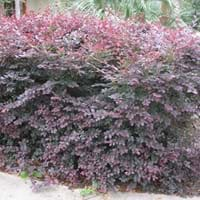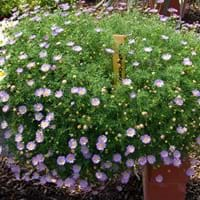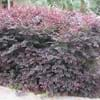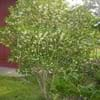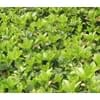Life Span
Perennial
Annual
Type
Broadleaf Evergreen
Tender Perennial
Origin
China, Japan
Hybrid origin, Australia, New Zealand
Types
Little Rose Dawn, Hines Purpleleaf, ‘Shang-hi
Not Available
Habitat
gardens, Hillside, open Woodlands, Roadsides, Rocky areas, Stream side, Woodlands
Dry areas, Islands, Semi arid regions, Tropical regions
USDA Hardiness Zone
6-9
10-12
AHS Heat Zone
Not Available
12-1
Sunset Zone
21,22
H1, 14, 15, 16, 17, 18, 19, 20, 21, 22, 23, 24
Habit
Oval or Rounded
Cushion/Mound-forming
Flower Color Modifier
Bicolor
Bicolor
Fruit Color
Brown
Not Available
Leaf Color in Spring
Green, Bronze
Green
Leaf Color in Summer
Green
Green
Leaf Color in Fall
Green
Green
Leaf Color in Winter
Green
Light Green
Leaf Shape
Ovate
Club - shaped
Plant Season
Spring, Summer, Fall, Winter
Spring, Summer, Fall, Winter
Sunlight
Full Sun, Partial Sun, Partial shade
Full Sun, Partial Sun
Type of Soil
Loam
Loam, Sand
The pH of Soil
Acidic, Neutral
Acidic
Soil Drainage
Average
Well drained
Bloom Time
Early Spring, Late Winter
Indeterminate
Tolerances
Drought
Drought
Where to Plant?
Container, Ground
Container, Ground, Pot
How to Plant?
Seedlings, Transplanting
Seedlings
Plant Maintenance
Low
Medium
Watering Requirements
Do Not over Water
Average Water Needs
In Summer
Lots of watering
Lots of watering
In Spring
Consistently
Moderate
In Winter
Ample Water
Average Water
Soil pH
Acidic, Neutral
Acidic
Soil Type
Loam
Loam, Sand
Soil Drainage Capacity
Average
Well drained
Sun Exposure
Full Sun, Partial Sun, Partial shade
Full Sun, Partial Sun
Pruning
Prune to control growth
Remove damaged leaves, Remove dead branches, Remove dead leaves
Fertilizers
All-Purpose Liquid Fertilizer, Fertilize three times a year
All-Purpose Liquid Fertilizer
Pests and Diseases
Bacterial Gall
Slugs, Snails
Plant Tolerance
Drought
Drought
Flower Petal Number
Single
Single
Foliage Texture
Medium
Fine
Foliage Sheen
Matte
Glossy
Attracts
Not Available
Not Available
Allergy
Not Available
Not Available
Aesthetic Uses
Showy Purposes
Beautification, Hanging Basket, Showy Purposes
Beauty Benefits
Not Available
Not Available
Environmental Uses
Not Available
Air purification
Medicinal Uses
No Medicinal Use
No Medicinal Use
Part of Plant Used
Whole plant
Flowers, Leaves
Other Uses
Used as Ornamental plant
Used as Ornamental plant
Used As Indoor Plant
No
No
Used As Outdoor Plant
Yes
Yes
Garden Design
Container, Feature Plant, Foundation, Hedges, Mixed Border, Screening, Wind Break
Bedding Plant, Container, Edging, Hanging Basket, Mixed Border, Rock Garden / Wall
Botanical Name
LOROPETALUM chinense
BRACHYSCOME iberidifolia
Common Name
Loropetalum, Chinese fringe flower
Brachycome iberidifolia, Swan River Daisy
In Hindi
Loropetalum
swan river daisy
In German
Loropetalum
Swan River Gänseblümchen
In French
Loropetalum
Swan River daisy
In Spanish
Loropetalum
Río Swan margarita
In Greek
Loropetalum
Swan River μαργαρίτα
In Portuguese
Loropetalum
daisy Swan River
In Polish
Loropetalum
Swan River stokrotka
In Latin
Loropetalum
Swan flumen primula
Phylum
Spermatophyta
Tracheophyta
Class
Dicotyledonae
Magnoliopsida
Order
Saxifragales
Asterales
Family
Hamamelidaceae
Asteraceae
Genus
Loropetalum
Brachyscome
Clade
Angiosperms, Core eudicots, Eudicots
Angiosperms, Asterids, Eudicots
Tribe
Not Available
Astereae
Subfamily
Not Available
Asteroideae
Number of Species
Not Available
Properties of Loropetalum Chinese and Swan River Daisy
Wondering what are the properties of Loropetalum Chinese and Swan River Daisy? We provide you with everything About Loropetalum Chinese and Swan River Daisy. Loropetalum Chinese doesn't have thorns and Swan River Daisy doesn't have thorns. Also Loropetalum Chinese does not have fragrant flowers. Loropetalum Chinese has allergic reactions like Not Available and Swan River Daisy has allergic reactions like Not Available. Compare all the properties and characteristics of these two plants. Find out which of these plant can be used as indoor plant. If you are interested to decorate your house and garden, find out aesthetic uses, compare them and select the plant which will beautify your surrounding. Along with beautification, try comparing medicinal and edible uses of Loropetalum Chinese and Swan River Daisy and you can choose the plant having best and most benefits.
Season and Care of Loropetalum Chinese and Swan River Daisy
Season and care of Loropetalum Chinese and Swan River Daisy is important to know. While considering everything about Loropetalum Chinese and Swan River Daisy Care, growing season is an essential factor. Loropetalum Chinese season is Spring, Summer, Fall and Winter and Swan River Daisy season is Spring, Summer, Fall and Winter. The type of soil for Loropetalum Chinese is Loam and for Swan River Daisy is Loam, Sand while the PH of soil for Loropetalum Chinese is Acidic, Neutral and for Swan River Daisy is Acidic.
Loropetalum Chinese and Swan River Daisy Physical Information
Loropetalum Chinese and Swan River Daisy physical information is very important for comparison. Loropetalum Chinese height is 180.00 cm and width 180.00 cm whereas Swan River Daisy height is 20.30 cm and width 30.50 cm. The color specification of Loropetalum Chinese and Swan River Daisy are as follows:
Loropetalum Chinese flower color: White
Loropetalum Chinese leaf color: Green and Bronze
Swan River Daisy flower color: White
- Swan River Daisy leaf color: Green
Care of Loropetalum Chinese and Swan River Daisy
Care of Loropetalum Chinese and Swan River Daisy include pruning, fertilizers, watering etc. Loropetalum Chinese pruning is done Prune to control growth and Swan River Daisy pruning is done Remove damaged leaves, Remove dead branches and Remove dead leaves. In summer Loropetalum Chinese needs Lots of watering and in winter, it needs Ample Water. Whereas, in summer Swan River Daisy needs Lots of watering and in winter, it needs Average Water.
